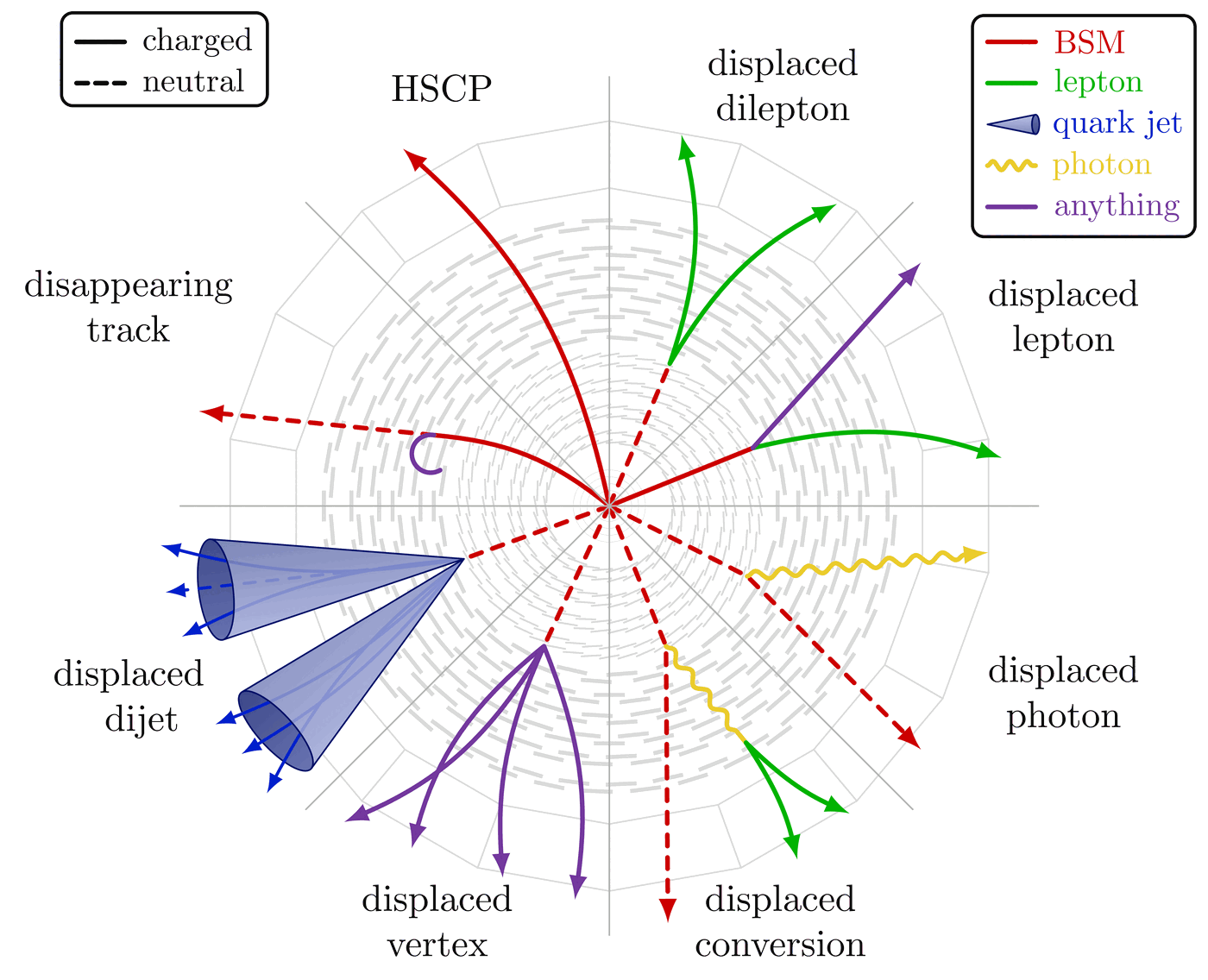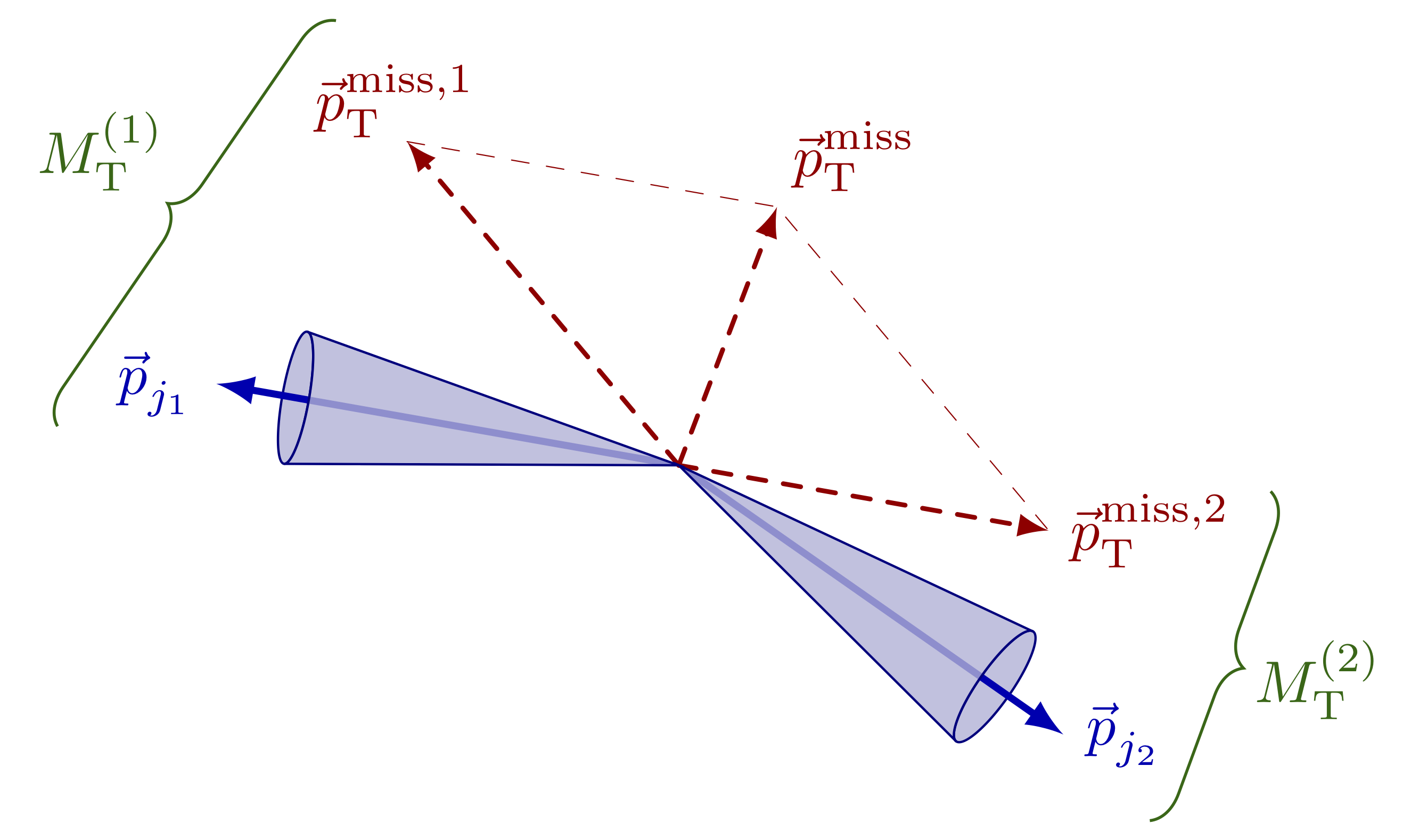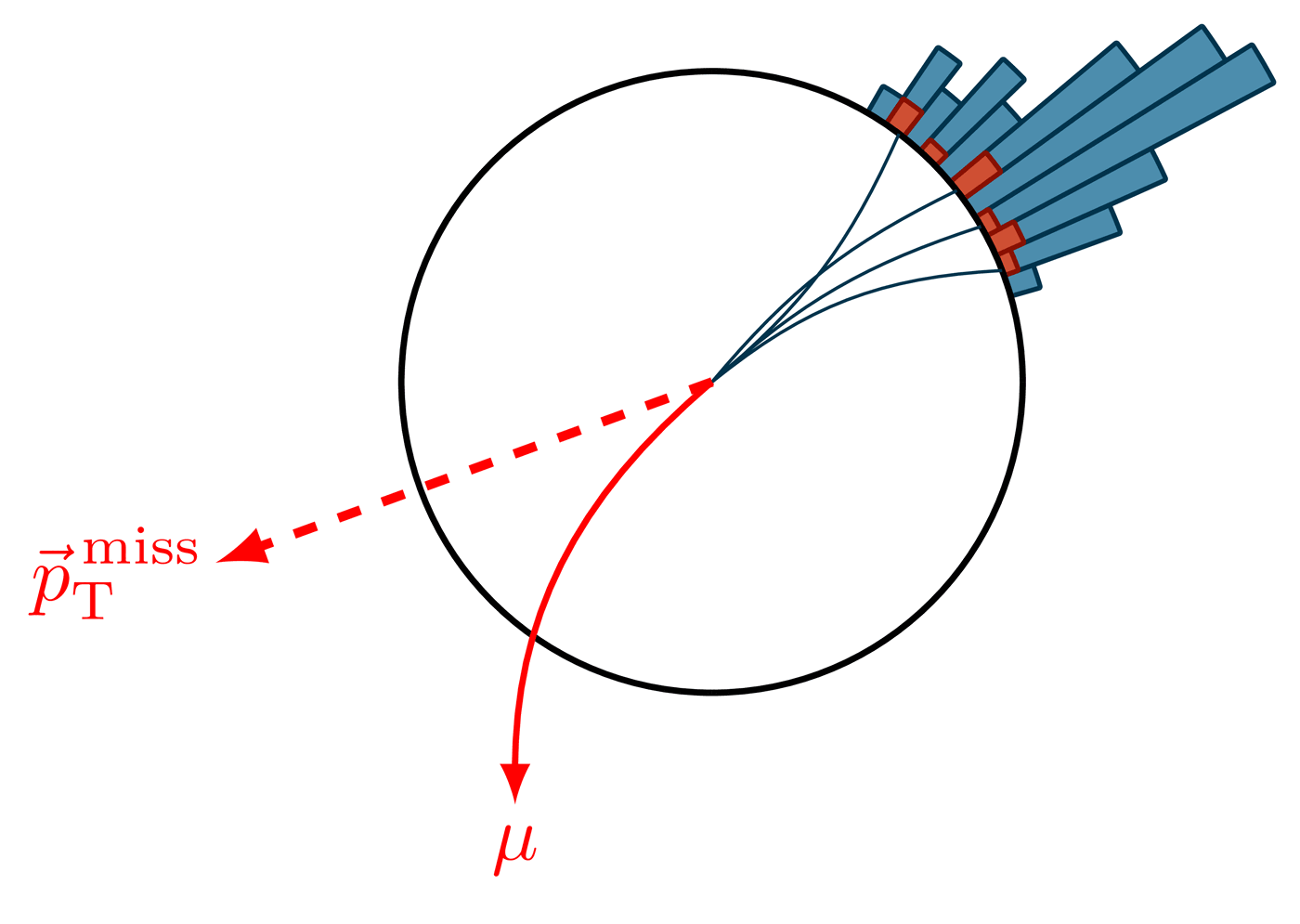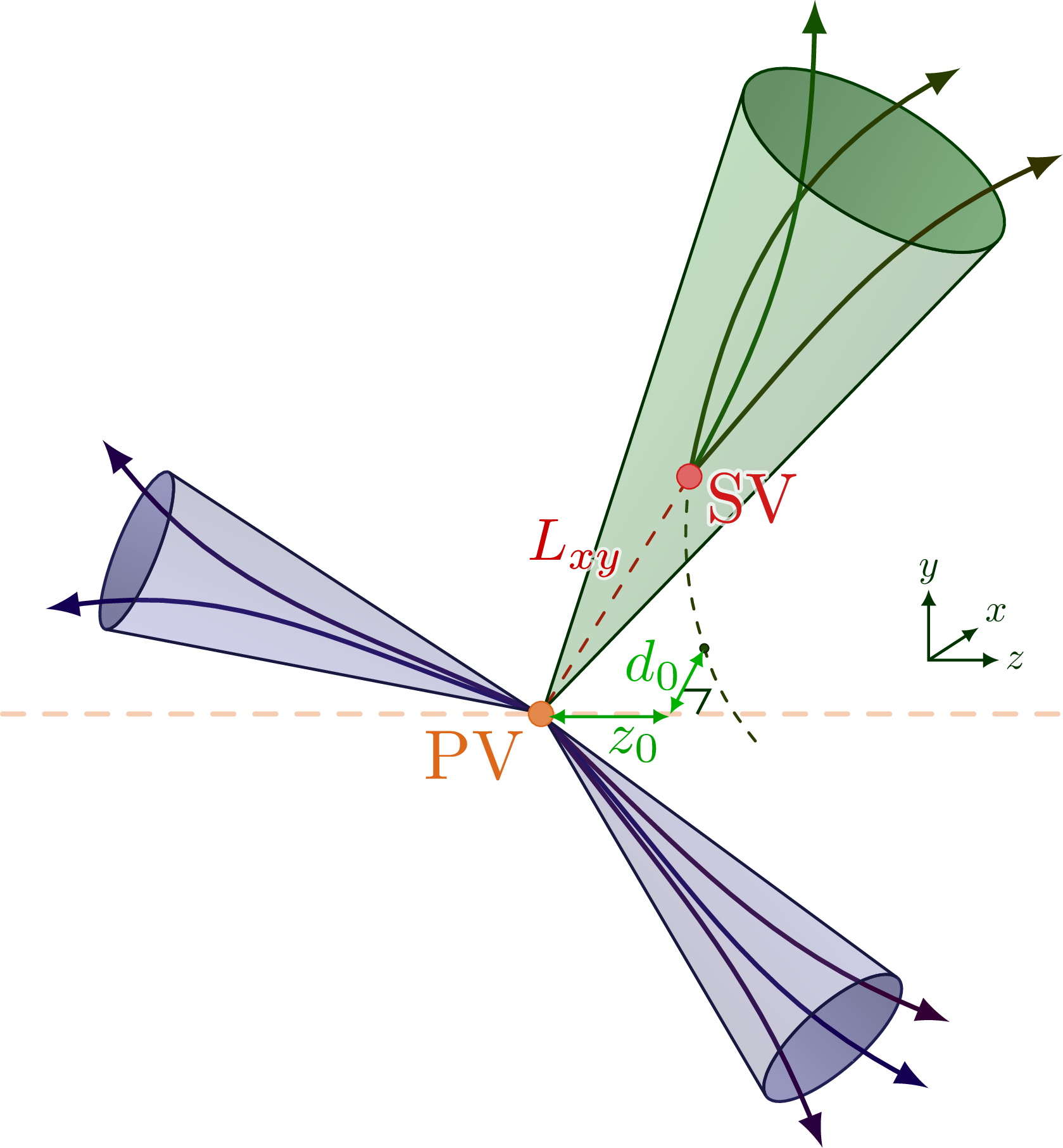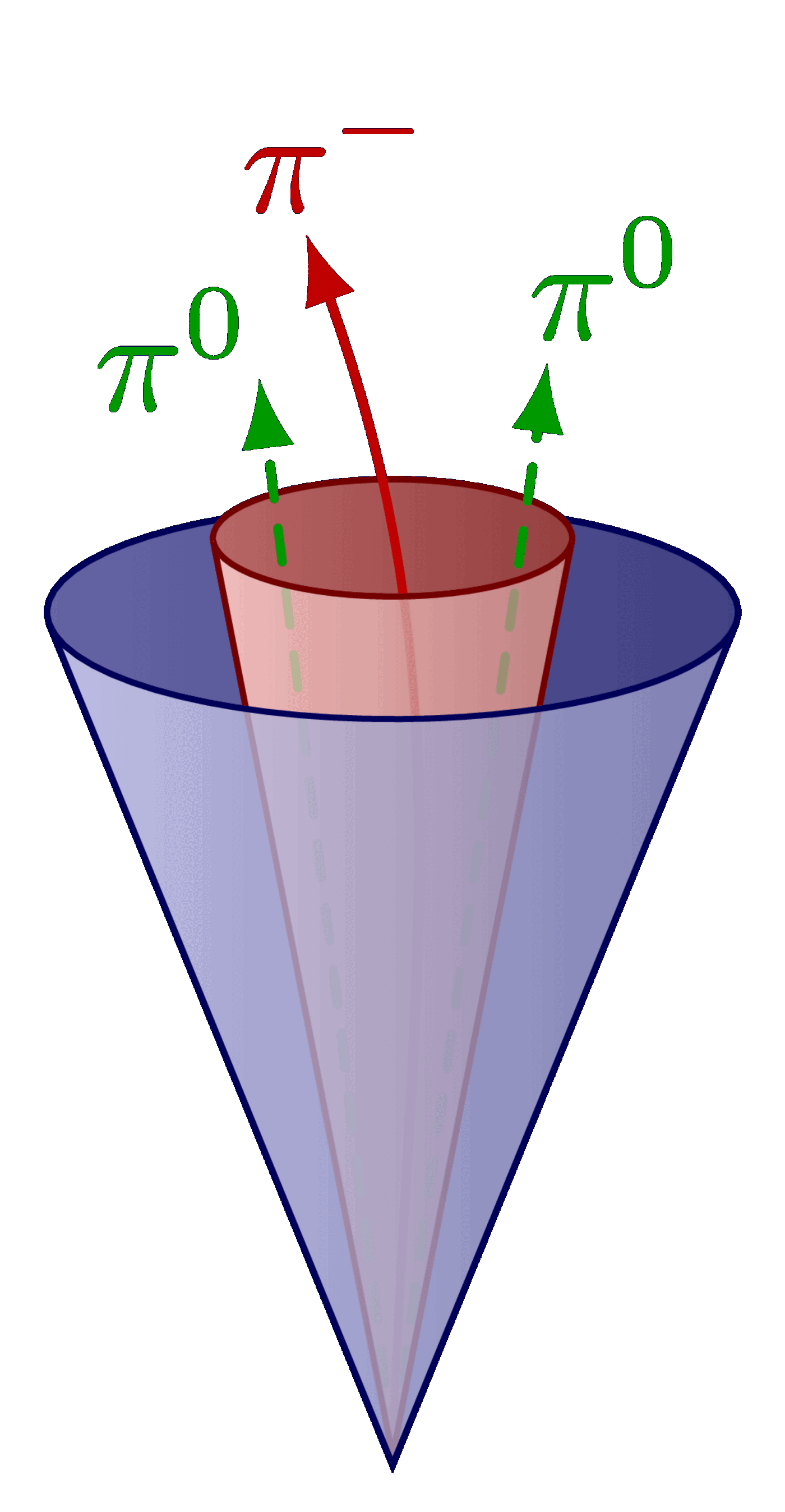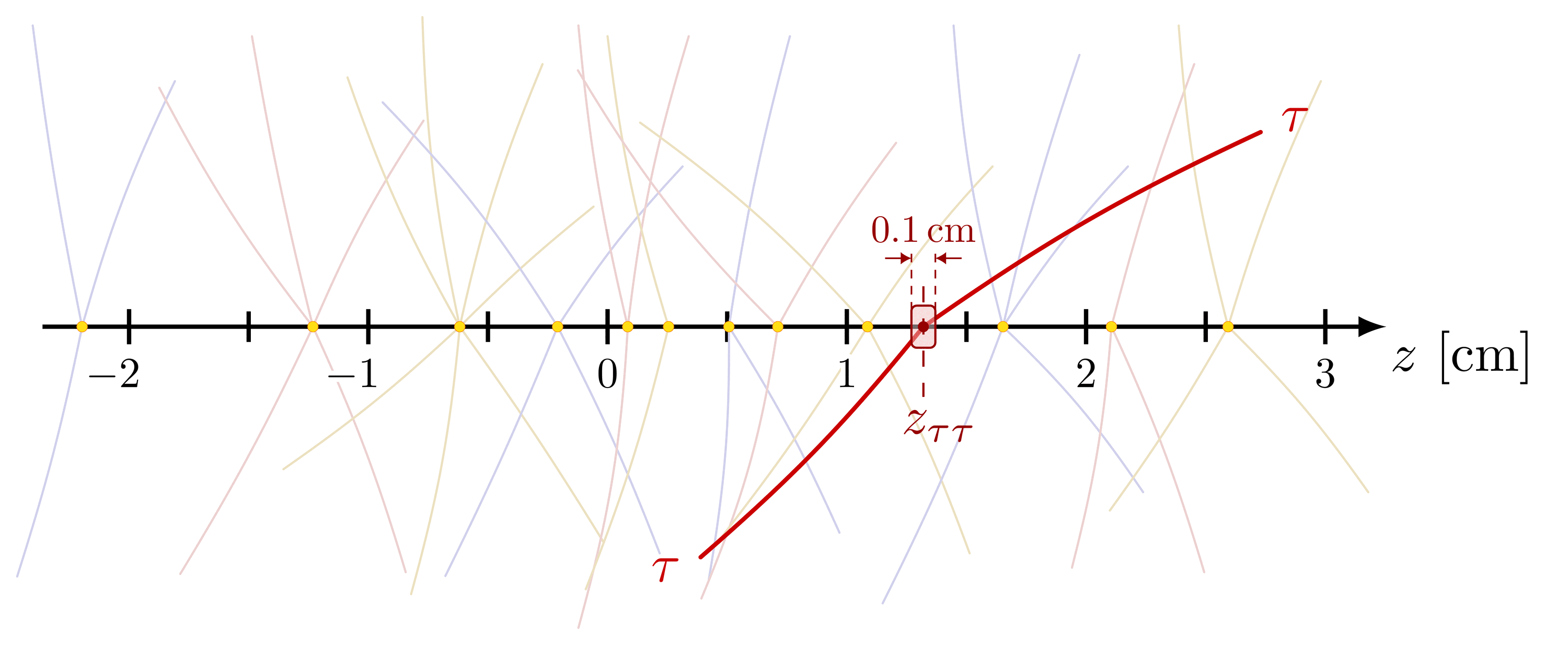Decay of the Z boson to leptons.
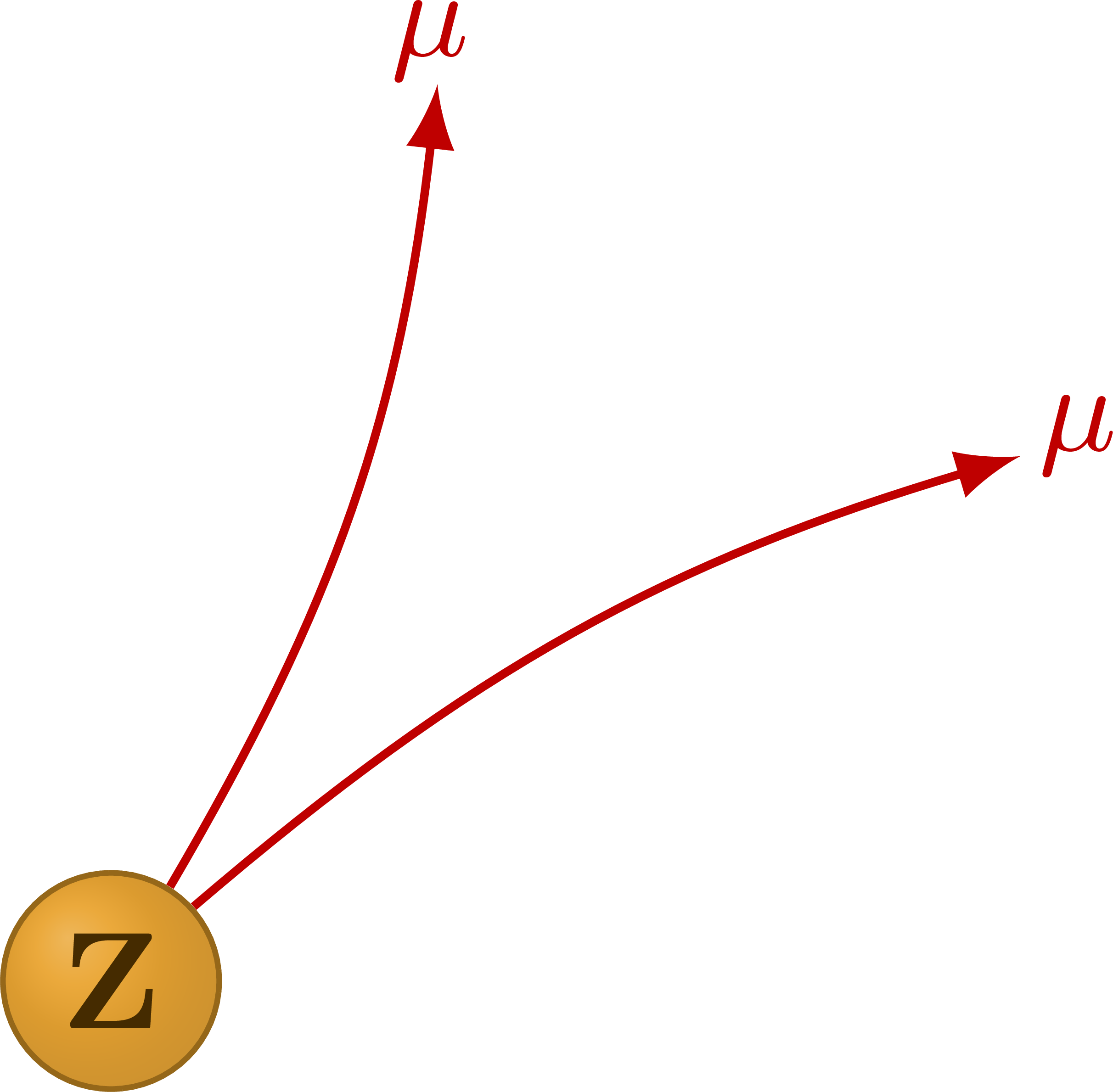
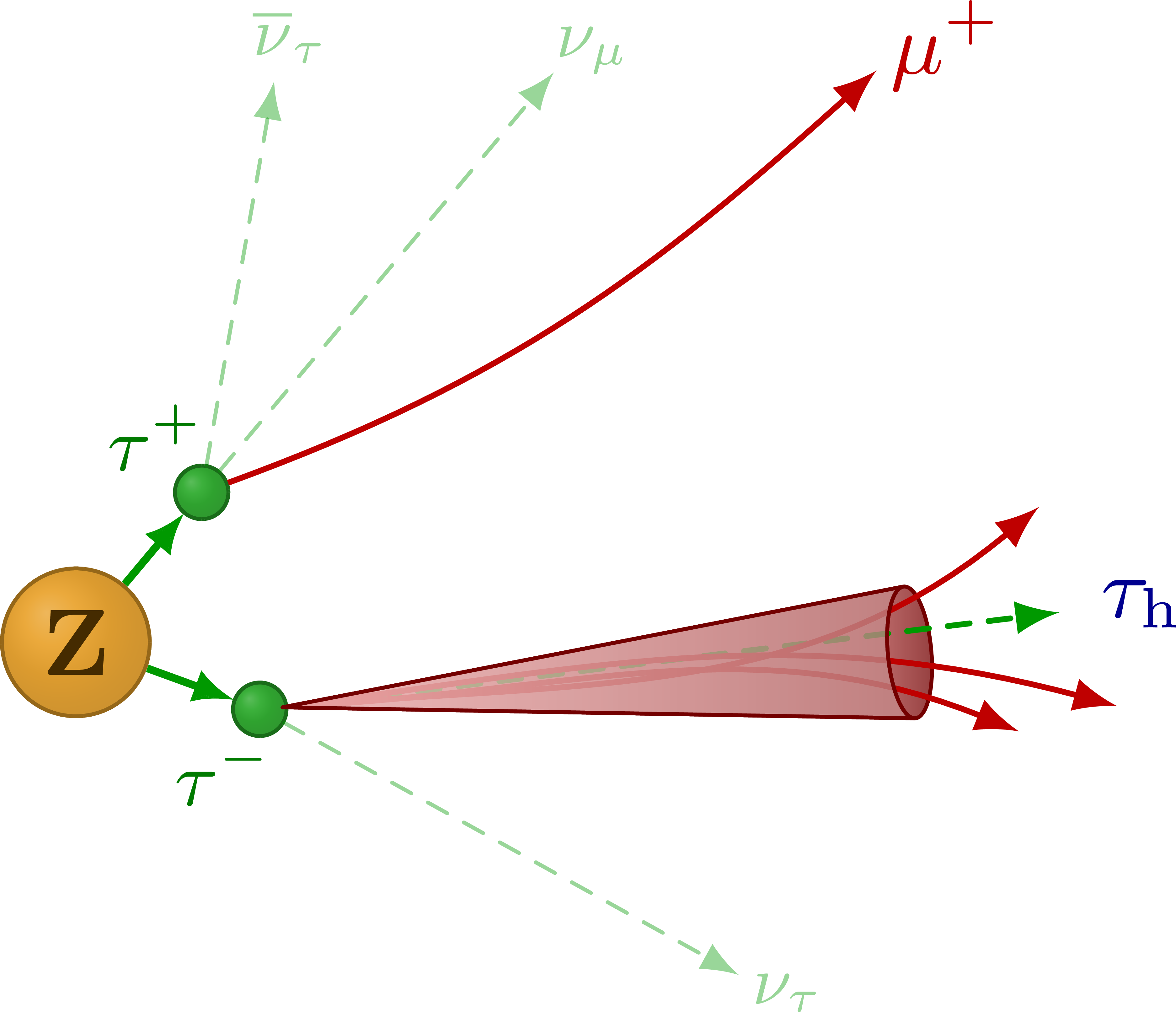
Edit and compile if you like:
% Author: Izaak Neutelings (Februari 2023)% Description: Decay of the Z boson to leptons.\documentclass[border=3pt,tikz]{standalone}\usetikzlibrary{calc}\usetikzlibrary{math} % for \tikzmath\usetikzlibrary{arrows.meta} % for arrow size\usetikzlibrary{decorations.pathmorphing} % for snakes\tikzset{>=latex} % for LaTeX arrow head\colorlet{myred}{red!75!black}\colorlet{myblue}{blue!70!black}%\colorlet{mydarkblue}{blue!50!black}\colorlet{mygreen}{green!60!black}\colorlet{myorange}{orange!75!yellow!90!black}\colorlet{isocol}{blue!70!black} % color isolation cone\colorlet{sigcol}{red!90!black} % color isolation cone\tikzstyle{track}=[->,line width=0.6,myred]\tikzstyle{dashed track}=[->,mygreen,line width=0.6,line cap=round,dash pattern=on 2.3 off 2.0]\tikzstyle{part}=[circle,ball color=#1,text=#1!30!black,postaction={fill=#1!77,fill opacity=0.8,draw=#1!60!black!90,thin}]\tikzstyle{mysmallarrow}=[-{Latex[length=4.2,width=3.5]},mygreen,thick]% JET CONE\newcommand\jetcone[6][sigcol]{{\pgfmathanglebetweenpoints{\pgfpointanchor{#2}{center}}{\pgfpointanchor{#3}{center}}\pgfmathsetmacro\oang{#4/2} % half-opening angle\edef\e{#5} % ratio a/b ("eccentricity") of cone top\def\tmpL{tmpL-#2-#3} % unique coordinate name\edef\vang{\pgfmathresult} % angle of vector OV\tikzmath{coordinate \C;\C = (#2)-(#3); % vector OV\x = veclen(\Cx,\Cy)*\e*sin(\oang)^2; % x coordinate P\y = tan(\oang)*(veclen(\Cx,\Cy)-\x); % y coordinate P\a = veclen(\Cx,\Cy)*sqrt(\e)*sin(\oang); % vertical radius\b = veclen(\Cx,\Cy)*tan(\oang)*sqrt(1-\e*sin(\oang)^2); % horizontal radius\angb = acos(sqrt(\e)*sin(\oang)); % angle of P in ellipse}\coordinate (\tmpL) at ($(#3)-(\vang:\x pt)+(\vang+90:\y pt)$); % tangency
Click to download: SM_Z_decay.tex • SM_Z_decay.pdf
Open in Overleaf: SM_Z_decay.tex


